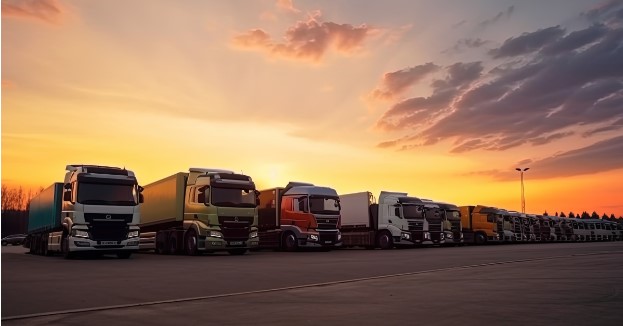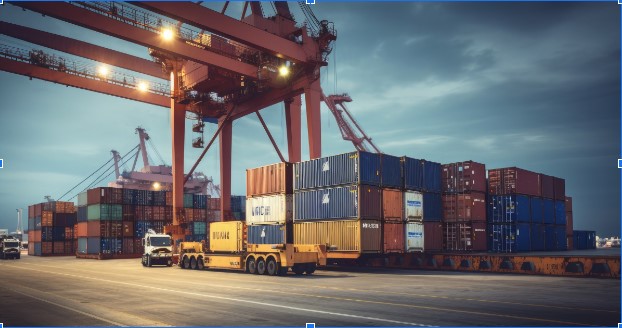In the expansive world of logistics, the backbone of many supply chains is formed by truck freight shipments. The seamless movement of goods from pick-up to delivery relies on a carefully orchestrated dance of processes, technology, and human expertise. In this exploration, we dive into the journey of truck freight shipments, uncovering the intricacies that define this crucial component of modern commerce.

- Pick-Up: The Starting Point of the Journey:
The journey of a truck freight shipment begins at the pick-up point. Whether it's raw materials from a supplier or finished products from a manufacturing facility, the process starts with the loading of goods onto a truck. This phase demands precision and efficiency, as delays at the pick-up stage can have a domino effect on the entire supply chain. Technological advancements, such as warehouse management systems and IoT-enabled devices, play a vital role in optimising this initial step, ensuring accurate inventory counts and timely loading.
- Route Planning and Optimisation:
Once loaded, the truck begins its journey, and route planning becomes a critical aspect of the logistics puzzle. Advanced routing algorithms consider factors like traffic conditions, weather, and delivery schedules to optimise the chosen route. Real-time tracking through GPS technology provides visibility into the truck's location, allowing for adjustments if unexpected issues arise. Efficient route planning not only saves time and fuel but also contributes to on-time deliveries, a key metric in the world of logistics.
- On-the-Road Challenges:
The road poses a myriad of challenges for truck freight shipments. From congested highways to unforeseen detours, truck drivers must navigate through a variety of obstacles. Here, technology once again proves its worth. Telematics systems, equipped with sensors and connectivity, monitor the condition of the vehicle and the driver's performance. This data helps in predicting maintenance needs, ensuring the safety of both the driver and the cargo. Moreover, real-time communication tools keep drivers connected with dispatchers, enabling quick decision-making in response to changing conditions.
- Cross-Docking and Transit Facilities:
In some cases, especially for long-haul shipments, cross-docking and transit facilities play a pivotal role in the journey. These intermediate stops allow for the transfer of goods between different trucks or modes of transportation, contributing to more efficient and cost-effective logistics. Cross-docking facilities leverage automation and streamlined processes to minimise dwell times, ensuring that the cargo moves swiftly through the supply chain.
- Last-Mile Delivery Challenges and Solutions:
As the truck approaches its destination, the focus shifts to the last-mile delivery—the final stretch that often presents unique challenges. Urban congestion, restricted delivery windows, and the need for personalised customer experiences are just a few of the hurdles in the last mile. Innovations such as route optimisation software, autonomous vehicles, and even drone deliveries are emerging to address these challenges, promising to redefine the last-mile landscape and enhance the efficiency of truck freight shipments.
- Warehouse Operations and Unloading:
At the delivery point, the unloading process marks the culmination of the journey. Warehousing operations play a crucial role in ensuring a smooth transition from truck to final destination. Automated systems, including conveyor belts and robotic assistance, are increasingly integrated into warehouse facilities to enhance speed and accuracy during unloading. This phase is also an opportunity for quality checks and inspections to ensure that the delivered goods meet the required standards.
- Technology's Role in Visibility and Transparency:
Throughout the entire journey of a road freight transport shipment, technology serves as a linchpin, providing visibility and transparency. Advanced tracking systems, coupled with data analytics, offer real-time insights into the location and condition of the cargo. This information is not only crucial for logistics providers to optimise their operations but also for customers who demand visibility into their shipments. Enhanced transparency fosters trust and accountability across the supply chain.
- Sustainability Initiatives in Truck Freight Shipments:
As the global focus on sustainability grows, the trucking industry is not immune to the demand for greener practices. From fuel-efficient vehicles to the implementation of alternative fuels and electric trucks, the industry is undergoing a transformation to reduce its environmental impact. Sustainability initiatives in truck freight shipments not only align with corporate social responsibility goals but also respond to the increasing expectations of environmentally conscious consumers.

In conclusion, the journey of truck freight shipments is a multifaceted process that involves meticulous planning, dynamic adaptability, and the seamless integration of technology. From the initial pick-up to the final delivery, each phase contributes to the overall efficiency and success of the logistics chain. As technology continues to evolve and sustainability becomes a driving force, the trucking industry will undoubtedly witness further innovations, shaping the future of truck freight shipments and their role in the broader landscape of global commerce.

No comments yet